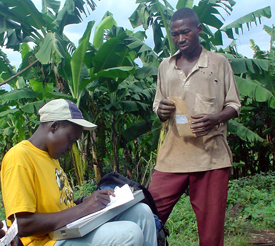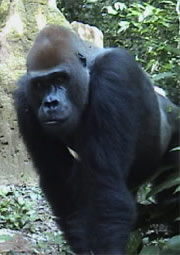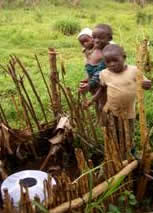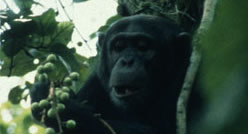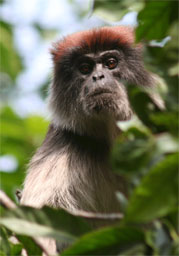Ecology and Epidemiology of Emerging Wildlife-Borne Diseases in the Tropics
Globally, three-quarters of all emerging diseases are zoonotic in origin and represent an increasing burden on the health and well-being of humans, domestic animals, and wildlife. Pathogen emergence is disproportionately associated with the tropics and is often linked to anthropogenic change. The overall goal of our work is to determine how and why anthropogenic changes to tropical forests place people and wildlife in such ecosystems at increased risk of pathogen exchange. The central hypothesis of this work is that key human behaviors, wildlife behaviors, ecological conditions, and landscape features increase the risks of interspecific disease transmission. This effort entails a combination of epidemiology, molecular ecology, behavioral ecology, social and clinical survey, and spatially explicit modeling. The ultimate products are implementable plans for protecting human and wildlife health, while simultaneously ensuring the sustainability of the ecosystems within which they live.
Effects of Logging on Infection Dynamics in African Apes and Humans
Selective logging is a dominant land use activity in forested areas of the tropics with the potential to provide a sustainable and profitable supply of timber while simultaneously ensuring biodiversity conservation. However, logging results in a suite of alterations in host ecology, forest structure, and human-wildlife overlap that may alter infection dynamics in resident populations. We are examining the effects of logging on transmission dynamics and infection risk among free-ranging western lowland gorillas (Gorilla gorilla), chimpanzees (Pan troglodytes), and people associated with the logging process through an integrated approach of pathogen diagnostics, biological and social survey, and spatially explicit models in the Republic of Congo.
Effects of Anthropogenic Disturbance on Vector Composition and Viral Distribution and Diversity
Vectors and vector-borne disease represent a growing global threat with medical, veterinary, conservation, and economic implications. In the last two decades, the geographic distribution of many vectors and associated pathogens has expanded, accompanied by more frequent and intense epidemics in wildlife, livestock, and people. The reasons for this dramatic resurgence of vector-borne diseases are complex and not well understood. However, increasing human populations in optimal vector habitat and anthropogenic disruption of the environment are both likely contributing to this pattern. In light of this, we are investigating the effects of habitat disturbance and natural habitat variability on vector composition and patterns of viral infection along disturbance gradients throughout the tropics. In addition to better understanding the role of human induced habitat changes on the distribution of viruses and their vectors, this work provides the opportunity for early detection of novel pathogens that may pose a threat to global health and / or wildlife conservation.
Dynamics of Parasitism in the Chimpanzees at Gombe National Park, Tanzania
Gombe National Park has enjoyed an unparalleled 40+ years of continuous behavioral and ecological study of wild chimpanzees, making it an ideal natural laboratory for the study of ecosystem health and the human-animal interface with respect to emerging infectious diseases. We are examining the dynamics of parasitism in Gombe chimpanzees in the context of behavior and, environmental and spatial risk factors to mitigate health risks to Gombe chimpanzees and create a model for other ape conservation areas. This effort is part of the Gombe Ecosystem Health Project led by Lincoln Park Zoo on behalf of the Jane Goodall Institute and Tanzania National Parks.
Primate Behavioral Responses to Parasitism
Competition and predation have long been considered the primary factors shaping the behavioral ecology and evolution of primates. However, recent studies of diverse taxa imply that parasite-host dynamics may provide important insights into complex aspects of behavior such as sociality, habitat use, group formation,and mate choice. Our work has examined the behavioral patterns of red colobus monkeys at Kibale National Park, Uganda, in relation to concurrent infection status at the individual, group, and population levels. This research has uncovered interesting relationships among infection prevalence, infection risk, ranging behavior, multi-species associations, and intra-group interactions (i.e., inter-individual spacing, grooming behavior). These results suggest that parasitic diseases are a selective force that must be considered if we are to improve our understanding of the proximate mechanisms underlying primate behavior. One interesting aspect of this work has been an investigation of the role of self-medication as a behavioral response to infection. This research integrates behavioral, in-vitro, and clinical aspects.

